Please be aware of our revised hours during the holiday season. We will operate on a half-day schedule on December 24th and 31st and will be CLOSED from December 25th to 28th, with limited customer service available. We will fully REOPEN on December 29th and again on January 2nd.
Ligament injuries can bench even the strongest athletes. Surgery has long been the standard fix, but it’s invasive and recovery can drag on for months. Now, researchers are turning their attention to peptides for ligament repair, a promising approach in ligament injury recovery.
These small protein fragments including BPC-157, KPV, Ipamorelin, and AOD-9604 are being studied in labs and animal models for their potential to aid tissue regeneration and inflammation reduction. While these peptides are only for research use and not approved for human treatment, the early findings are promising.
Could these peptides one day offer a non-surgical path to recovery? That’s the question driving today’s regenerative science in non-surgical ligament repair. With that foundation laid, let’s explore how these peptides act as tiny messengers guiding tissue healing.
Explore BPC-157 from Direct Peptides United States, a powerful peptide studied for its potential to accelerate ligament repair and reduce inflammation naturally.
Peptides act like tiny messengers in the body, guiding cells to repair damaged tissues. In ligament injuries, they help regulate inflammation reduction, encourage new blood vessel growth, and stimulate collagen production the building block of strong ligaments and essential for tendon repair.
Peptides such as BPC-157 and KPV have shown in animal studies to speed up healing and reduce scar tissue formation. Meanwhile, Ipamorelin supports growth hormone release, which can further aid recovery.
Though these peptides are still experimental and meant for research only, their ability to influence key healing processes makes them exciting candidates in the search for better peptide therapy for ligaments and how peptides help ligament healing.
This brings us to collagen, the body’s natural rope that holds ligaments together.
Discover KPV Peptide from Direct Peptides United States, known for its strong anti-inflammatory properties that may support immune modulation and tissue recovery.
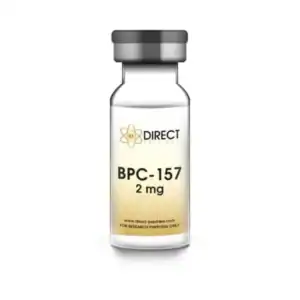 Collagen is the main structural protein in ligaments. Think of it as the body’s natural rope, holding everything together and giving ligaments their strength and flexibility. When ligaments get injured, the body works to rebuild this collagen network, but the process can be slow and imperfect.
Collagen is the main structural protein in ligaments. Think of it as the body’s natural rope, holding everything together and giving ligaments their strength and flexibility. When ligaments get injured, the body works to rebuild this collagen network, but the process can be slow and imperfect.
Without enough quality collagen, ligaments stay weak, increasing the risk of re-injury. Peptides for ligament repair like BPC-157 are believed to stimulate collagen production, promoting stronger and faster repair.
Understanding collagen’s role is key to unlocking better ways to heal ligament damage effectively, especially in cases of repetitive stress injury.
Knowing collagen’s role, it’s fascinating to see how peptides can actually encourage its production.
Explore Peptide Supplies at Direct Peptides United States for all your reconstitution requirements.
Peptides influence collagen production by signaling cells called fibroblasts the body’s natural builders. These fibroblasts produce and organize collagen fibers, which form the backbone of healthy ligaments. Certain peptides, such as BPC-157 and KPV, can boost fibroblast activity, encouraging the growth of new collagen.
This helps repair damaged tissue more efficiently and reduces the risk of weak scars. Additionally, peptides like Ipamorelin may indirectly support collagen synthesis by promoting growth hormone release.
Together, these mechanisms make peptides for ligament repair promising candidates in advancing ligament healing and tissue repair, illustrating the profound effects of peptides on collagen synthesis.
Building on this, growth hormones further support the repair process, and certain peptides play a key part in releasing them.
Check out Ipamorelin from Direct Peptides United States, a growth hormone–stimulating peptide that may aid ligament healing by enhancing cellular regeneration.
 Growth hormones play a vital role in tissue regeneration, including ligaments. They help stimulate cell growth, collagen production, and overall repair processes. Peptides like Ipamorelin work by encouraging the body to release more growth hormone naturally.
Growth hormones play a vital role in tissue regeneration, including ligaments. They help stimulate cell growth, collagen production, and overall repair processes. Peptides like Ipamorelin work by encouraging the body to release more growth hormone naturally.
This boost can speed up healing and improve the quality of repaired tissue. While surgery mechanically fixes ligaments, growth hormone-related peptides may enhance the body’s own ability to heal itself.
Understanding this connection is crucial for developing innovative, non-surgical ligament repair treatments using growth hormone peptides.
The interplay between peptides and growth hormones sets the stage for tissue regeneration, a critical factor in healing.
Shop AOD-9604 at Direct Peptides United States, a modified peptide fragment explored for its fat metabolism support and potential to assist tissue repair.
Tissue regeneration is the body’s natural way of replacing damaged cells with healthy new ones. In ligament healing, this process is critical because ligaments need strong, flexible tissue to regain full function. Unlike simple repair, which often leads to scar tissue, true regeneration restores the original structure and strength.
Peptides for ligament repair help by activating cells responsible for regeneration, encouraging them to rebuild ligaments more effectively. Enhancing tissue regeneration could reduce recovery time and improve outcomes, making it a promising focus for future ligament therapies and innovative treatments for ligament injuries.
Given this, it’s no surprise that cutting-edge ligament therapies are focused on harnessing these regenerative properties.
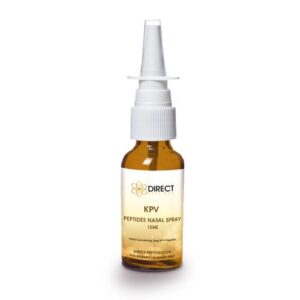 Ligament therapies have evolved beyond traditional surgery and physical therapy. Recent advances focus on enhancing the body’s own healing mechanisms.
Ligament therapies have evolved beyond traditional surgery and physical therapy. Recent advances focus on enhancing the body’s own healing mechanisms.
Peptides like BPC-157, KPV, and Ipamorelin are at the forefront of this movement, showing promise in accelerating repair and reducing inflammation.
Alongside peptide treatments, techniques such as platelet-rich plasma (PRP) injections and stem cell therapy aim to stimulate tissue regeneration.
These advances are particularly important for conditions like runner’s knee treatment, which often involve complex ligament and tendon damage. Combining peptides for ligament repair with other therapies could revolutionize recovery from such stubborn injuries.
These advances are particularly promising for injuries caused by repetitive stress, which can be stubborn to treat.
Repetitive stress occurs when ligaments face constant strain without enough recovery time. Over weeks or months, this leads to microtears and inflammation, weakening the ligament’s structure. This is common in conditions like runner’s knee, where repeated knee motions irritate ligaments and tendons.
Such damage slows healing and risks chronic problems. Using peptides for ligament repair may help address these issues by promoting tissue regeneration and inflammation reduction. Understanding how repetitive stress injury harms ligaments is essential for developing effective peptide therapy for ligaments aimed at speeding recovery and restoring ligament strength.
One major hurdle in these injuries is chronic inflammation, something peptides are showing they can help modulate.
Inflammation reduction is key in healing, but when it becomes chronic due to repetitive stress, it can hinder ligament healing. Peptides for ligament repair like BPC-157 and KPV have shown promising effects in reducing inflammation by modulating the immune response and promoting tissue repair.
By calming inflammation, these peptides create a more favorable environment for ligaments to heal and regenerate. This makes them a compelling focus in treating overuse injuries, such as runner’s knee, where persistent inflammation delays recovery.
Beyond calming inflammation, peptides also fine-tune the immune response, balancing repair and protection.
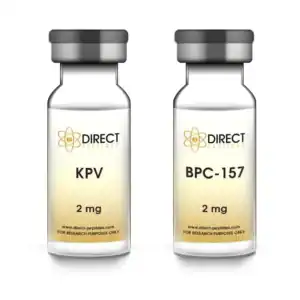 The immune response plays a crucial role in ligament healing by clearing damaged tissue and triggering repair processes. However, excessive or prolonged inflammation can slow recovery.
The immune response plays a crucial role in ligament healing by clearing damaged tissue and triggering repair processes. However, excessive or prolonged inflammation can slow recovery.
Peptides for ligament repair like KPV help regulate this immune activity, reducing harmful inflammation while encouraging healing signals.
By balancing the immune response, these peptides support a smoother recovery, minimizing tissue damage caused by overactive inflammation.
This targeted modulation offers a promising approach to managing ligament injuries, especially those aggravated by repetitive stress injury or overuse.
This balance highlights why controlling inflammation is essential for effective ligament healing.
Inflammation is a double-edged sword in ligament repair. It’s necessary to trigger healing, but if uncontrolled, it damages healthy tissue and delays recovery. Modulating inflammation ensures it supports repair without causing excess harm. Peptides for ligament repair like BPC-157 and KPV play a key role in this balance by calming inflammation and promoting tissue regeneration.
Proper inflammation control can lead to faster healing, reduced pain, and stronger ligaments, making it a critical focus in developing advanced treatments for injuries such as runner’s knee.
Taken together, these insights point toward a future where peptides might transform ligament injury treatment.
The future of healing ligament injuries looks very hopeful with peptides for ligament repair. These tiny proteins can do more than just help wounds heal faster.
They can also reduce swelling, help make new collagen, and grow healthy tissue. For problems like runner’s knee, peptides for ligament repair could give people a way to get better without surgery.
As science moves forward, peptides like BPC-157, AOD-9604, KPV and Ipamorelin, and might be used with other treatments to help individuals heal faster and avoid getting hurt again.
Using peptides for ligament repair could mean surgery is not always needed. This would give athletes and patients a quicker, safer, and better way to get back to their normal lives.
[1] Chang CH, Tsai WC, Lin MS, Hsu YH, Pang JH. The promoting effect of pentadecapeptide BPC 157 on tendon healing involves tendon outgrowth, cell survival, and cell migration. J Appl Physiol (1985). 2011 Mar;110(3):774-80.
[2] Chang CH, Tsai WC, Hsu YH, Pang JH. Pentadecapeptide BPC 157 enhances the growth hormone receptor expression in tendon fibroblasts. Molecules. 2014 Nov 19;19(11):19066-77.
[3] Hao ZW, Zhang ZY, Wang ZP, Wang Y, et al. Bioactive peptides and proteins for tissue repair: microenvironment modulation, rational delivery, and clinical potential. Mil Med Res. 2024 Dec 5;11(1):75.
[4] Sinha DK, Balasubramanian A, Tatem AJ, Rivera-Mirabal J, et al. Beyond the androgen receptor: the role of growth hormone secretagogues in the modern management of body composition in hypogonadal males. Transl Androl Urol. 2020 Mar;9(Suppl 2):S149-S159.
[5] Kwon DR, Park GY. Effect of Intra-articular Injection of AOD9604 with or without Hyaluronic Acid in Rabbit Osteoarthritis Model. Ann Clin Lab Sci. 2015 Summer;45(4):426-32.
Explore ALL Peptide Vials from Direct Peptides today, your trusted supplier of premium clinical grade peptides online.
Peptides used in ligament repair research, such as BPC-157, KPV, AOD-9604, and Ipamorelin, are not approved for medical treatment and are intended only for laboratory or experimental settings. Studies in animals suggest these peptides may influence inflammation, tissue repair, and collagen production, but human research is limited. Anyone exploring peptide science should understand that safety, dosing, and long-term effects remain unverified. Peptides for ligament repair are best viewed as emerging research tools rather than approved therapeutic options.
Animal and lab studies suggest peptides may influence ligament healing by affecting collagen, fibroblasts, and inflammation. However, peptides aren’t approved for ligament repair, and controlled studies don’t always reflect real-world results. Healing depends on injury severity, rest, rehab, and biology. Research focuses on how peptides affect healing pathways, not how quickly humans recover.
Overuse injuries often involve chronic inflammation, microtearing, and collagen degradation. Research peptides such as BPC-157 and KPV are being studied for their potential influence on inflammation and tissue repair, which are key factors in conditions like runner’s knee. While animal data is encouraging, peptides for ligament repair are not approved treatments, and there is no verified benefit for human overuse injuries. Their role remains strictly investigative within laboratory and research environments.
Traditional anti-inflammatory methods, such as rest, ice, NSAIDs, and physical therapy, are proven approaches for managing ligament inflammation. Peptides for ligament repair are being explored for their potential to modulate immune responses at the cellular level, but human studies are lacking. Unlike established therapies, peptides are not approved for treating inflammation and should only be used in research contexts. Comparisons between peptides and standard treatments remain theoretical until clinical data become available.
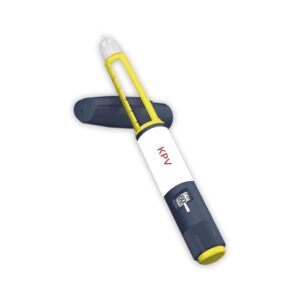
KPV Pre-Mixed Pen 2mg
£20.45 – £55.21Price range: £20.45 through £55.21 Select options This product has multiple variants. The options may be chosen on the product page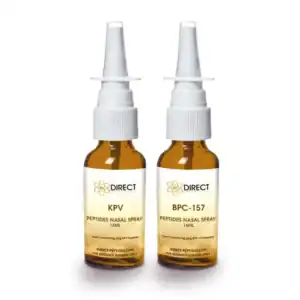
BPC-157 KPV Nasal Stack
£41.13 – £73.26Price range: £41.13 through £73.26 Select options This product has multiple variants. The options may be chosen on the product page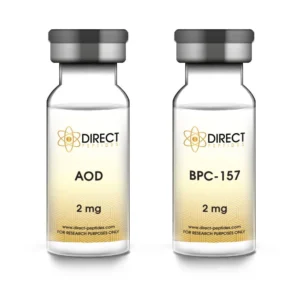
AOD-9604 BPC-157 Peptide Stack
£26.81 – £35.79Price range: £26.81 through £35.79 Select options This product has multiple variants. The options may be chosen on the product page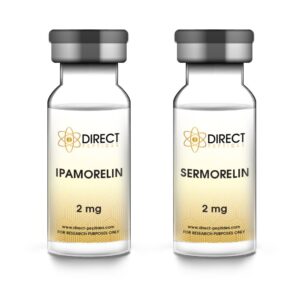
Ipamorelin Sermorelin Peptide Stack
£27.20 – £36.18Price range: £27.20 through £36.18 Select options This product has multiple variants. The options may be chosen on the product pageALL CONTENT AND PRODUCT INFORMATION AVAILABLE ON THIS WEBSITE IS FOR EDUCATIONAL PURPOSES ONLY.
DISCLAIMER: These products are intended solely as a research chemical only. This classification allows for their use only for research development and laboratory studies. The information available on our United States Direct Peptides website: https://direct-peptides.com is provided for educational purposes only. These products are not for human or animal use or consumption in any manner. Handling of these products should be limited to suitably qualified professionals. They are not to be classified as a drug, food, cosmetic, or medicinal product and must not be mislabelled or used as such.